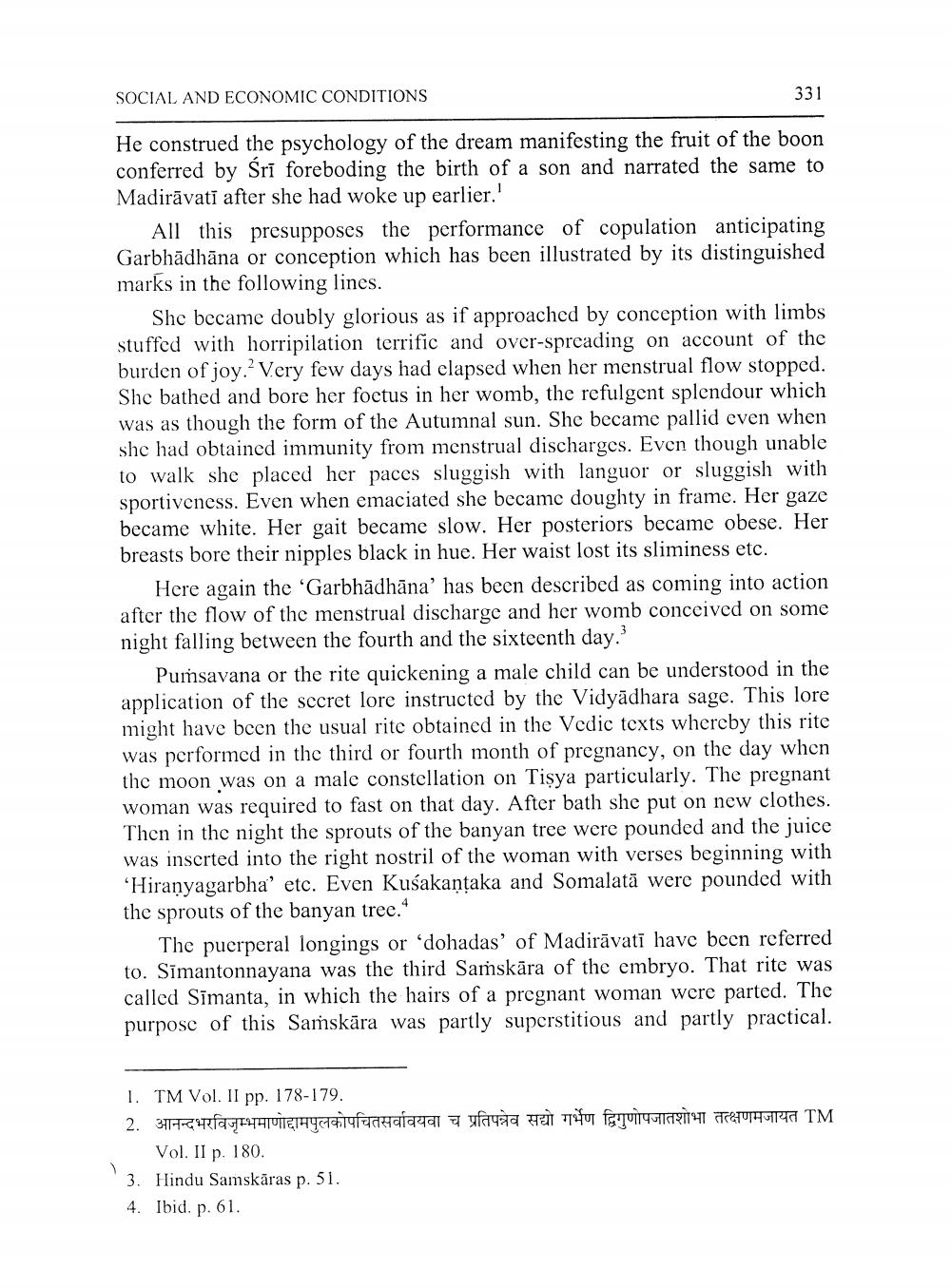________________
SOCIAL AND ECONOMIC CONDITIONS
331
He construed the psychology of the dream manifesting the fruit of the boon conferred by Sri foreboding the birth of a son and narrated the same to Madirāvati after she had woke up earlier.!
All this presupposes the performance of copulation anticipating Garbhādhāna or conception which has been illustrated by its distinguished marks in the following lines.
She became doubly glorious as if approached by conception with limbs stuffed with horripilation terrific and over-spreading on account of the burden of joy. Very few days had clapsed when her menstrual flow stopped. She bathed and bore her foetus in her womb, the refulgent splendour which was as though the form of the Autumnal sun. She became pallid even when she had obtained immunity from menstrual discharges. Even though unable to walk she placed her paces sluggish with languor or sluggish with sportiveness. Even when emaciated she became doughty in frame. Her gaze became white. Her gait became slow. Her posteriors became obese. Her breasts bore their nipples black in hue. Her waist lost its sliminess etc.
Here again the 'Garbhādhāna' has been described as coming into action after the flow of the menstrual discharge and her womb conceived on some night falling between the fourth and the sixteenth day."
Puṁsavana or the rite quickening a male child can be understood in the application of the secret lore instructed by the Vidyādhara sage. This lore might have been the usual rite obtained in the Vedic texts whereby this rite was performed in the third or fourth month of pregnancy, on the day when the moon was on a male constellation on Tisya particularly. The pregnant woman was required to fast on that day. After bath she put on new clothes. Then in the night the sprouts of the banyan tree were pounded and the juice was inserted into the right nostril of the woman with verses beginning with "Hiranyagarbha' etc. Even Kusakantaka and Somalatā were pounded with the sprouts of the banyan tree.
The puerperal longings or dohadas' of Madirāvati have been referred to. Sīmantonnayana was the third Samskāra of the embryo. That rite was called Sīmanta, in which the hairs of a pregnant woman were parted. The purpose of this Saṁskāra was partly superstitious and partly practical.
1. TM Vol. II pp. 178-179. 2. आनन्दभरविजृम्भमाणोद्दामपुलकोपचितसर्वावयवा च प्रतिपन्नेव सद्यो गर्भेण द्विगुणोपजातशोभा तत्क्षणमजायत TM
Vol. II p. 180. 3. Hindu Samskāras p. 51. 4. Ibid. p. 61.




